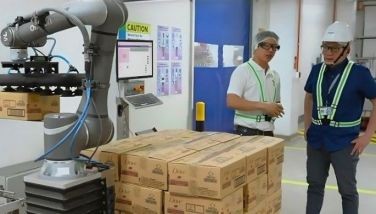A look into Mandaue
CEBU, Philippines – While in Cebu for the Sinulog festivities, visitors will be glad to discover interesting places in the fringes of the capital city itself. And they need not spend much or go a great distance to get to one. For instance, the closest neighboring city offers many attractions and it’s just a few minutes away.
Mandaue City is one of the three highly urbanized cities of Cebu province, located on the central-eastern coastal region, to the immediate north of Cebu City. On its right is Mactan Island, where Lapu-Lapu City is located. In a sense, Mandaue is situated in between two cities – Cebu City and Lapulapu City, a position akin to the process of making its famous “Bibingka sa Mandaue,” which is cooked with “fire under it and fire over it.”
Visitors coming to Cebu City by plane actually get to Mandaue first, after Mactan. From the airport they reach the Cebu mainland via two bridges – the Mactan-Mandaue Bridge and the Marcelo Fernan Bridge. Depending on the route taken upon coming to Mandaue, observant guests may already have a good glimpse of the place.
But a passing sight only reveals too little of this interesting place. The term “bridge city” attached to Mandue does not necessarily suggest that the city is simply to be passed through, a way to somewhere else – like a bridge. Mandaue is a significant destination in itself.
The first community in Mandaue supposedly consisted of a group of Austronesian people. The Venetian chronicler Antonio Pigafetta wrote of a settlement called Mandani, which existed in the area with a chieftain named Apo Noan, and then a few decades later another ruler named Lam Busan took over. At the arrival of the Spaniards, the place was established into a town.
The land area of Mandaue is mainly flat or plain, with loam soil, apparently the reason why it used to be an agricultural district reportedly with rice as the primary crop. This fact has had made way for the emergence of several rice-based delicacies, the most popular of which are the “bibingka” and “budbod,” prepared with generous use of coconut milk. To this day, coconut trees remain abundant in the barangays a little away from the sites of industrialization.
The city has since become a chartered city, a “highly urban city.” Various industries now abound in Mandaue. More and more businesses are cropping up, and national and international companies are locating in the city such that available space has become an issue. The ongoing North Reclamation Project – the North Special Administrative Zone – currently has about 180 hectares of reclaimed land, of which about 36 hectares belong to Mandaue.
The city has indeed gone a long way from its Hispanic times. The population of a little more than 11 thousand between the years 1637 and 1638, stated in Bosetta and Bravo’s “Diccionario,” has grown to over 330 thousand, per May 2000 census. Expectedly, the numbers must have leapt further in the present.
And the popular lifestyle has changed. As industry has taken over traditional farming and fishing as the main source of the people’s income, the population also embraces novel ways of living. Just in the past year or so, in a section along A. S. Fortuna Avenue up towards the Banilad side, a good number of entertainment and dining hubs have sprouted and quickly became favorite lifestyle destinations.
There are a good number of restaurants that cater to gourmets – international cuisines like Italian, Japanese, Korean, Mexican, Vietnamese, and Western. Local favorites are served, too, like the lechon (called “inasal” by locals). Lechon is a Cebuano pride, being cited as the best roasted pig in the world by an international food critic.
The same is true at the section of the city’s reclamation area, around the vicinity of the Cebu International Convention Center, where shopping centers and other lifestyle establishments are drawing big crowds day and night.
It’s easy to go around Mandaue. Available transportation is just very much like in Cebu City, with taxi cabs and public utility jeepneys. At the city center, it is better to walk from one place to the next, as the place is closely clustered together.
The San Miguel Brewery plant is a wonderful site to visit. It is such a landmark in Mandaue, being the pioneering and the biggest industrial locator in the area. Many people say that it was this company that jump-started the city’s economic boom.
Other points of interest in Mandaue include the Luis Cabrera Ancestral House and Museum, the Mandaue City Public Library, the Quijano Museum, Ouano Wharf, Mandaue Salt Beds, the “Bantayan sa Hari” (Spanish-period watchtower), and the Eversley Childs Sanitarium. The more adventurous guests may also like to go to the city’s Monkey Caves, Cansaga Bay, Casili Hills, Jagobiao Spring, and the Cabancalan-Banilad Sinkholes. The City Tourism Office will be able to suggest – even arrange for – more places to discover in Mandaue.
Of course, Mandaue has always been known for its signature delicacies: “Bibingka sa Mandaue,” masareal, tagaktak and more. These are nice “pasalubong” (arrival gifts to loved ones at home) that departing visitors often take with them. But the those who have looked deeper into Mandaue have a lot more to bring home. – As researched by Carlo Rivera
- Latest






























